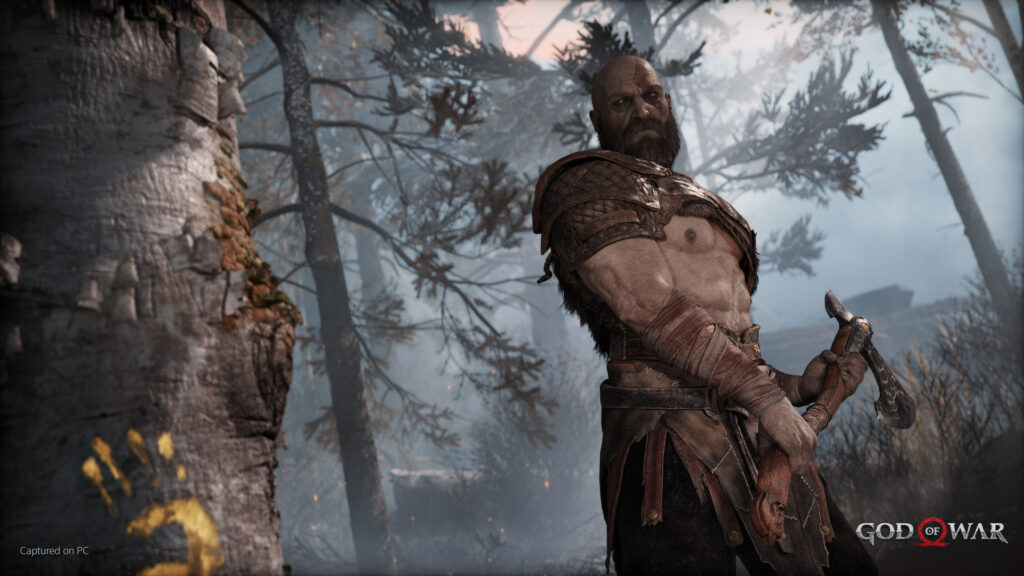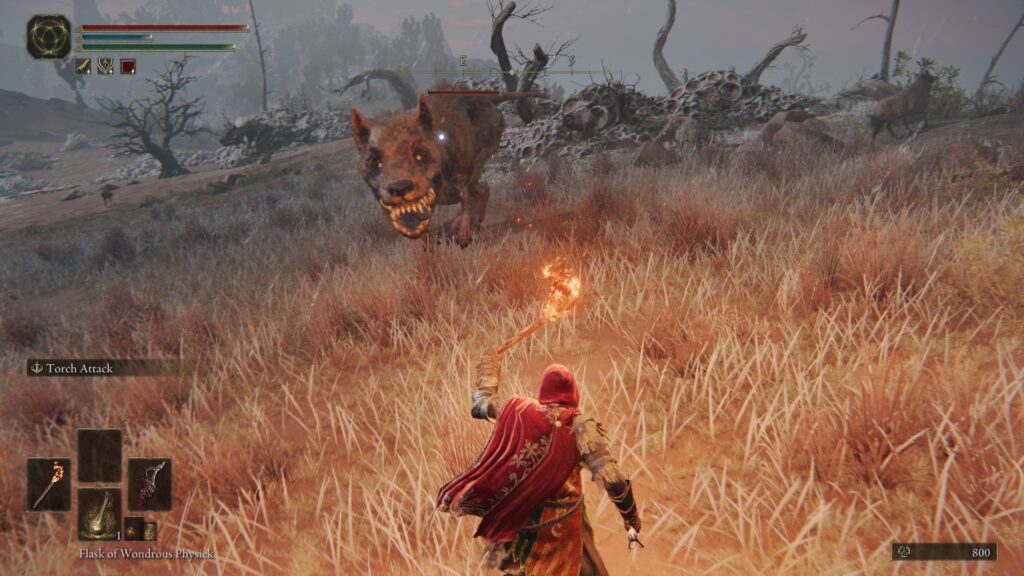When it comes to understanding game design and gameplay, these two categories are often difficult for people from the outside to study objectively. This is why it’s hard to do a review of the systems of games like Elden Ring, Devil May Cry 5, and especially Doom Eternal. However, they go together when it comes to analyzing the difficulty of a game and it’s very hard to actually make something hard.
A Difficult(y) Discussion
Video game difficulty can mean different things for everyone. Some people can only relax if a game is testing them every which way, and there are others who just want to breeze through a game and treat it as an extended movie or TV show. For games designed around reflex-driven gameplay, if you want the game to resonate with fans, then there must be some meat on the gameplay bone for them.
In the last few years with developers furthering their chase of Hollywood and “cinematic” experiences, the conflict between story and gameplay has grown. This is true in the world of the PC game as well as with all other console games too, so it’s something that is happening across the board. Whether this is from trying to balance the “gamey” elements with a serious story or wanting to engage both the story fans and hardcore gameplay ones with a single title.
For developers who are trying to have it both ways, they tend to create an experience that is all over the place — where “easy” mode has no gameplay, and the highest challenge is a borderline masochistic ordeal with no attempt at balancing. I want to stop here for a second and say that if you design a difficulty level that is so hard that your play testers can’t finish it or no one on the design team, then you may not be creating a fair and balanced difficulty.
As I’ve said many times before, there is a difference between fair and challenging and unfair and brutal difficulty. The games that get this right create a title that is challenging but still provides players with the means of success within the gameplay. If the only way to succeed is to break the game or use exploits to get past challenges, then that is a failure from the designer.
Then there are people who will praise a game for its gameplay but only engaged with it on the easiest or normal settings. Or people who think that an unfair challenge is a badge of honor and a game that doesn’t do that is “being dumbed down”. The problem is that if you want to test both the good and bad of a game’s design, then you need to perform a stress test with the gameplay.
Pushing Game Systems
For reflex-driven games, the only way to see the cracks and issues with their gameplay is to push it as far as it can go. For people reviewing games, you cannot accurately grade a game on the quality of its gameplay if you play it on the easiest settings and never touch the harder ones. For developers wanting to study gameplay, playing on the hardest setting lets you examine the following:
- What the designer views as “the hardest” way to play a game
- How do the systems hold up when stats are tweaked to the most against the player
- What elements were altered to change the difficulty settings
- Are there any unfair elements to the game?
Challenge and difficulty are often viewed as one and the same, but you can make a game that’s challenging and not difficult if you keep it balanced. Too many designers view “hard” mode as shorthand for “unfair” — that everything should be pushed so high that no one should be able to beat it. In the original release of Diablo 3, designers commented that no one on the playtesting team was able to beat the game on the highest difficulty at the time. While this may sound like a great marketing point, and people were praising this at the time, it was determined after the fact that the reason was that the game was just fundamentally imbalanced against the player leading to the 1.04 complete rework.
Elements that were annoying or frustrating on the lower difficulties become far more pronounced on the highest setting. God of War 2018 was celebrated by a lot of people for its story, but the gameplay on a foundational level was deeply flawed with its gear rating system and general approach to combat. Again, playing the game on normal or below and combat is too fast, and enemies are too weak to notice it. Play on hard and higher, and you can see how limited you really are in terms of survival and the cracks in the design.

God of War 2018 was celebrated for its story, but the combat showed some major issues the more you focus on it
Good difficulty design is about starting at a benchmark for what you expect people to play the game at and then pushing things lower and higher to accommodate different players.
This also means understanding what the pain points and difficulty curves in your game are, and what are the best solutions to minimize them. In Doom Eternal, the game’s difficulty settings do not change the pacing or any of the systems in it, but what they do is minimize the aggressiveness of the enemies and give the player more chances to succeed. If you’re really good at the game, how you approach the challenges will not change on any difficulty setting, and Doom Eternal is one of the few games that does a good job of inviting players to raise the difficulty if they want or lower it back down if it’s too much.
One of the worst ways, in my opinion, to adjust the difficulty in a game is to adjust stats. A lot of designers think that if something takes longer to kill, or kills the player faster, then the game must be harder, conversely, if the player has more health and damage then the game is easier. Stat adjusting oftentimes just leads to a game feeling longer than it should be, or more of a grind for RPGs. Implementing new challenges, new and harder enemy variants, or just changing the game, are better options for difficulty settings. The one exception to this rule is if we’re talking about games inherently built on the importance of numbers, like tactical strategy and SRPGs. In the XCOM games from Firaxis, changing an enemy’s health pool or the damage they do by a few points radically impacts your strategy and ability to fight them. For everything else, changing numbers will not fix the design problems or UX issues with your game
Another reason why you want to start at a benchmark is that it provides a good measure of how your different systems and options will scale difficulty by difficulty. In the game Astlibra Revision, there are multiple difficulty levels ranging from super easy to very hard. On the higher difficulties, the amount of grinding stats to survive hits grows exponentially, and I had to use a high-risk/high-reward strategy to win. You do not want options that work on the lower difficulties to be useless on the higher ones.
What is Good Difficulty?
Good difficulty design is hard (no pun intended) to discuss, as every player has their own skill levels and knowledge base when it comes to games. When I think about games that treat difficulty right, either implicitly or explicitly, it comes from two places.
First, difficulty shouldn’t be an objective measure of a game’s quality — you don’t want to say that if someone is not playing on normal or higher “then they’re not playing the true game.” Likewise, saying that your game is perfect for everyone because you have a “story” and “hardcore” difficulty doesn’t work either. The best kind of balance is something where normal is your baseline, and you can use the difficulties to either segment or gate certain aspects of the difficulty from the player. This is often why some of the more balanced takes on difficulty are in games that only have one difficulty setting but provide ways within the game to raise or lower the challenge through the player’s actions.

From Software excels when it comes to providing multiple ways to play their games that implicitly impact the difficulty
Returning to Doom Eternal, this is the point of having the same pacing and experience on each difficulty but decreasing or increasing the safety net for the player respectively. If you want to play and enjoy the game, regardless of difficulty, you need to learn the systems and rules. For someone who figures it all out and starts enjoying the game, they are free to raise the difficulty if they want; and conversely, lower it if a section proves to be too difficult. Remember, if your game has any pain points or poor design elements, they will not be erased based on the difficulty someone is playing at.
The other aspect of good difficulty is that the player should be in control over the difficulty of the game. What that means is you want to avoid having aspects in your game that make things intentionally difficult that a player can’t opt in or out of. Mechanics that punish a player when they lose, but don’t affect skilled players, are examples of this. If someone wants to reduce healing supplies or raise the cost of shops, you can have that as an option if they want it, but don’t make those modifiers standard for everyone else.
One of the positives of progressive difficulty systems, like the pact of pain from Hades, is that the player is the one who gets to decide how hard to make the game, not the designers. Players are far more accepting of difficulty if they’re the ones who are in control over it.
One final point about “story mode” or just turning off game systems. I’m not a fan of this kind of balancing, as I feel it has become a crutch for designers. If someone can only play your game when different systems are turned off, then that is a failure of the designer to create good onboarding and use UI/UX practices. And trying to make a game that appeals to everyone is often a fool’s task, as no game will have 100% approval no matter what you do. Once again, the best games come from having a well-defined core gameplay loop and then figuring out ways to make that approachable to more people. Finally, an easy mode doesn’t erase pain points or frustration, it just makes them harder to find, and UI problems never go away.
A Fair Beatdown
When a game does its difficulty curve right, it leads to a better experience and smaller churn rates. You want the player to understand why they lost, what they can do differently, and want to keep playing. Having extreme challenges for your master players is perfectly fine, but you want to make sure that people who want that level of difficulty are getting to it, and not the people who are just starting the genre for the first time.
- If you enjoyed this story, consider joining the Game-Wisdom Discord channel. It’s open to everyone.

